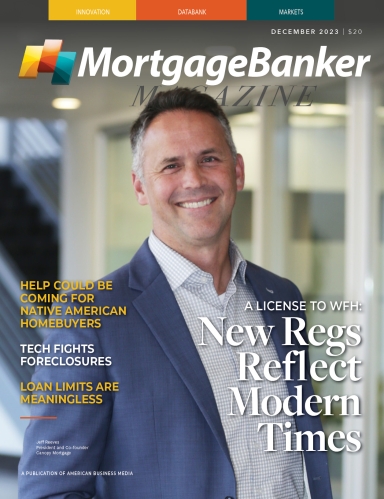“How the home is treated, whether it’s included in bankruptcy or not, and when the foreclosure happened in relation to the bankruptcy - all of these things affect the timelines for consumers to be able to get back into homes. And that’s ultimately the goal of my advocacy,” Schang says.
A deed-in-lieu of foreclosure, for example, saves lenders the cost of hiring an attorney to evict the homeowner, while a short sale doesn’t really benefit anybody, except maybe the buyer. If there is a notice of default on a property and it is sold, the seller can potentially make another home purchase in one year. If that home were to fall into foreclosure, they would be looking at a minimum three-year wait.
“Foreclosure, bankruptcy and short sale all have similar timelines for waiting periods, except for Fannie Mae and Freddie Mac,” Schang says. “If you just have a foreclosure without bankruptcy, it’s seven years. But if it’s a short sale or a deed-in-lieu, it’s a four-year wait.”
In the case of deed-in-lieu, he adds, many lenders actually pay borrowers to vacate the property and rent someplace else.
“There’s an agreement that the consumer’s gonna leave the home in good condition. And that’s basically it. The bank takes the house back, they fix it up, they send it to a real estate agent or put it in auction and they resell the property to recoup their costs.”
WHAT ARE THE STATS?
The expiration of COVID-era government initiatives such as foreclosure moratoriums and loan forbearance have left many homeowners in a bad spot.
As mortgage veterans might recall, foreclosure filings started to tick upwards by more than 10% per quarter in the years leading up to the housing market crash of 2008.
However, analysts contend, today’s market is more of a sign of the times than impending doom.
“We’re expecting a 20% increase in defaults just with our current clients,” Schmidt says of the coming months. “A lot of these people through no fault of their own are all of a sudden going to be delinquent and they’re going to need assistance and the assistance is somewhat limited. It’s going to be very interesting to see what happens in the next six months.”
Property data analyst ATTOM’s Midyear 2023 U.S. Foreclosure Market Report showed a total of 185,580 U.S. properties with foreclosure filings in the first six months of 2023. That included default notices, scheduled auctions and bank repossessions.
That figure was up 13% year over year, but a 185% increase from the same time period in 2021, when filings were at historic lows.
ATTOM’s latest foreclosure market analysis showed a significant uptick in Q3 2023, with a steep quarterly and annual rise of foreclosure rates. The report highlighted a 28% surge from the previous quarter, totaling 124,539 U.S. properties with foreclosure filings. This represents a 34% increase from the same period last year. Lenders started foreclosure on 68,961 U.S. properties in Q3 2023, up 3% YOY, nearly reaching pre-pandemic levels.
As for those who have taken advantage of less harmful options, Schmidt is counting the ways.
“We’ve been seeing an increasingly high number of partial claims as opposed to modifications or deferrals,” she reports. “For borrowers who need assistance with a lower payment, there’s a combo where you take a partial claim or deferral and add it to a modification. What we’re seeing because of the higher interest rates is that we’re using more and more of the allowable partial claim or deferral money - which is usually capped at about 30% of the UPB (unpaid principal balance). We’re using it up in one shot to just get a borrower a lower payment. It’s going to be incumbent on servicers to really work hard in trying to communicate to their borrowers you’ve got to make your mortgage your priority because this could be the only assistance you’ll get.”
EDUCATING LOs & CONSUMERS
Faith Schwartz, founder, CEO and president of Housing Finance Strategies, founded the HOPE NOW alliance in 2007 to get loan servicers and struggling borrowers facing each other to table-talk solutions. During an interview with NMP Magazine at the start of the pandemic, she recalled how these events drove home the fact that there is a family behind every mortgage. The alliance claims that as of 2014, it had resolved more than two million cases. Schwartz could not be reached by the writing of this article, but the initiative is currently working with the FHFA and the enterprises on mortgage relief programs, according to its website.
“I think advocacy marketing is very, very underrated,” Schang points out. “Just build your network and build your authority and build your reputation as somebody who actually cares about people.”
Consumers get much of their information on the internet nowadays, which is where he has positioned himself as the go-to mortgage guru.
“(Fintech) has completely empowered the consumer. The consumer has all of the control in the decision-making process now. People don’t call salespeople for answers anymore. They do Google searches, they watch YouTube videos, they go on social media, they follow trending topics, and they look up hashtags. It’s silly to me to think that we should behave in a way that doesn’t invite and accommodate how we shop for information online to make decisions.”
Schang encourages LOs to share stories of borrowers they’ve helped through unique situations. Chances are, there is someone else out there in a different ocean, on the same boat.
“I think if you’re the source of the education,” he says, “you empower that consumer and you earn their trust. And when you earn their trust, you have a chance to earn their business.”
Before he stopped originating loans, he would regularly hear from people he had previously engaged with on the blog who were in a position to buy again.
This is turning the phrase “return on investment” into “return on engagement.”
“I think if you’re in a market where you’re seeing foreclosures increase,” Schang adds, “there’s a really good opportunity to collaborate with real estate professionals in the space and create education and awareness efforts. If you can head off a foreclosure and turn it into a listing for a real estate agent, you build and deepen the relationship with that real estate agent. And I think that just leads to business for all of us.”














